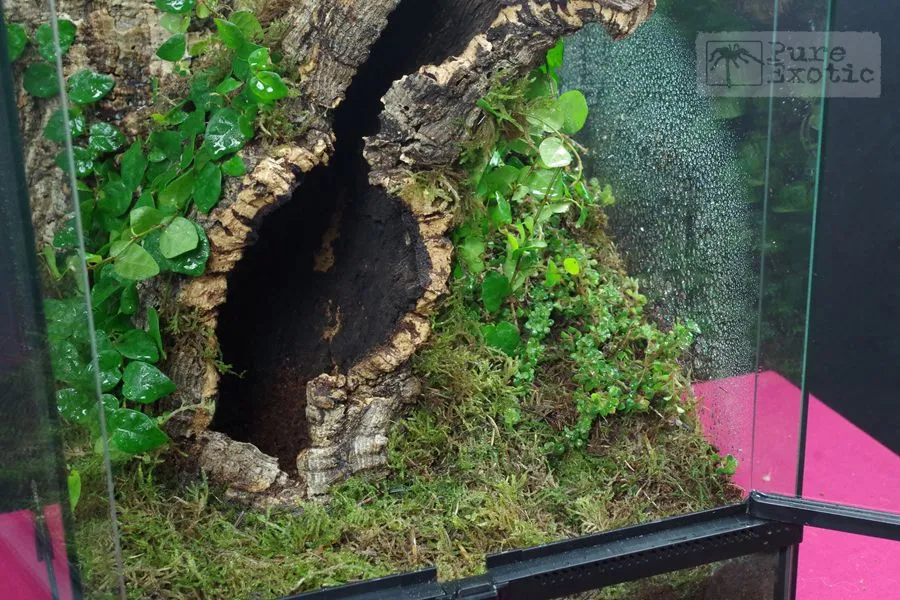The Gooty Sapphire Tarantula (Psalmopoeus irminia), with its stunning blue and sapphire hues, is a captivating addition to any arachnid enthusiast’s collection. Ensuring its well-being starts with providing the perfect home. This comprehensive guide delves into every aspect of setting up the ideal Gooty Sapphire Tarantula enclosure, ensuring your pet thrives in a comfortable and stimulating environment. From selecting the right size to maintaining optimal humidity and temperature, we’ll cover everything you need to know to create a thriving habitat for your beautiful tarantula.
Choosing the Right Gooty Sapphire Tarantula Enclosure
The foundation of your Gooty Sapphire Tarantula’s well-being lies in selecting the appropriate enclosure. The right enclosure size is crucial for your tarantula’s comfort and ability to thrive. Too small, and your tarantula will feel cramped; too large, and it may have difficulty finding food and feel stressed. Consider the dimensions carefully and prioritize a setup that provides adequate space for movement, burrowing (if the species prefers), and the addition of essential elements like a water dish and hide. Correctly choosing your tarantula enclosure is vital for the happiness of the spider, as well as your peace of mind knowing that your spider has the appropriate living space.
Enclosure Size Considerations
When selecting the enclosure size, consider the tarantula’s size and potential adult size. A general rule of thumb is that the enclosure should be at least twice the tarantula’s leg span in length and width, and the height should allow for substrate depth and ample vertical space if the tarantula is arboreal (tree-dwelling) or semi-arboreal. Remember that these tarantulas can grow up to around 5-6 inches in leg span, so plan accordingly. As the spider ages, make sure to provide adequate space. The goal is to give the tarantula a comfortable place to live and grow without feeling stressed or overwhelmed.
Impact of Tarantula Size
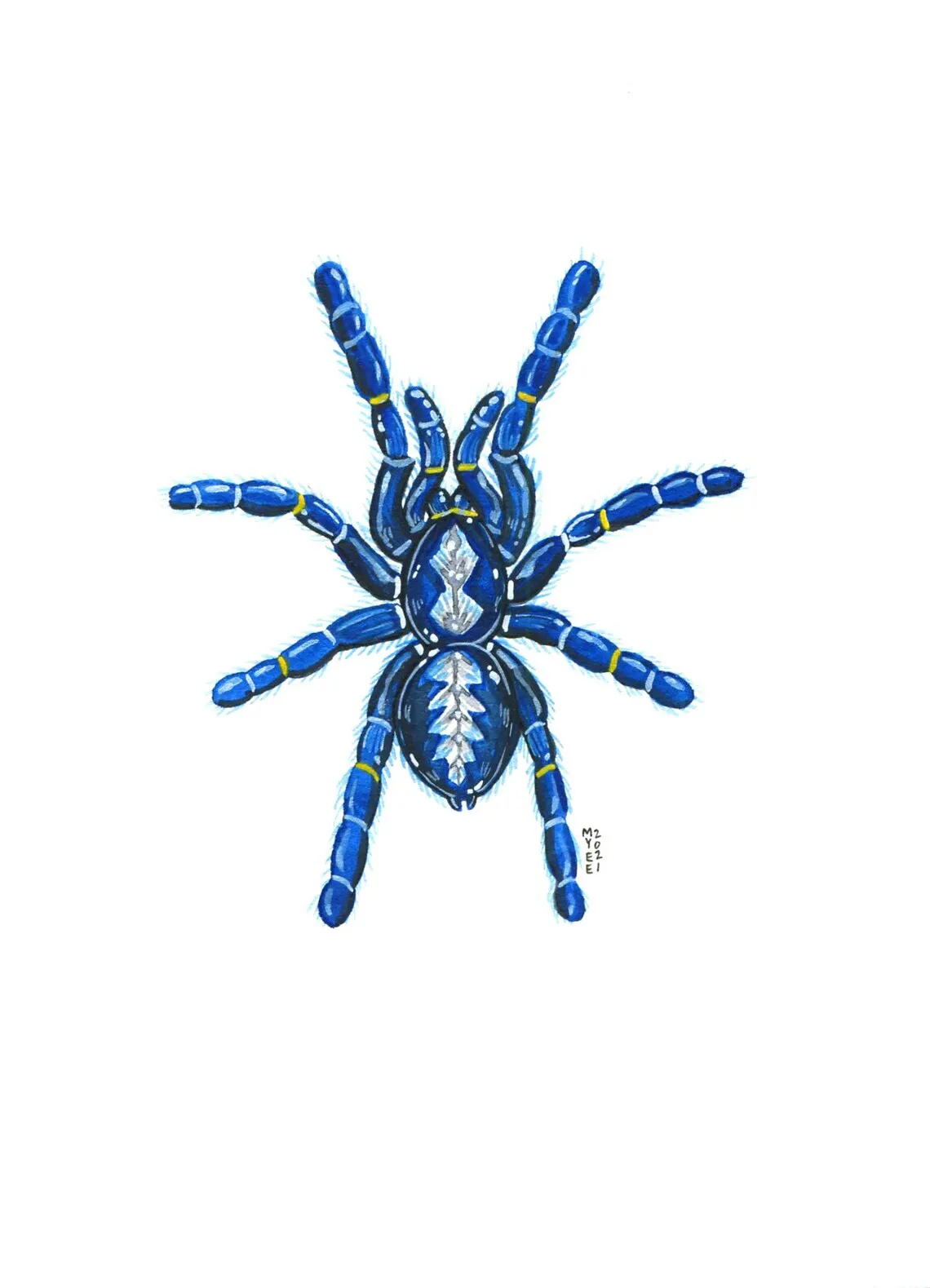
The size of your Gooty Sapphire Tarantula directly influences the enclosure dimensions you require. For spiderlings and juvenile tarantulas, a smaller enclosure (e.g., a deli cup or a small terrarium) may suffice, as it makes it easier for them to find food and feel secure. However, as they grow, they will need larger quarters. Overcrowding can lead to stress and potential health issues, so regular enclosure size adjustments are necessary as your tarantula matures. Always consider the space needed to grow and plan for the future.
Ventilation Requirements
Proper ventilation is essential for maintaining a healthy enclosure environment. Stagnant air can lead to the build-up of harmful molds and bacteria, which can be detrimental to your tarantula’s health. Ensure the enclosure has adequate ventilation holes or mesh tops to allow for airflow. The amount of ventilation needed will depend on your local climate and the enclosure’s humidity levels. Make sure that humidity and ventilation are balanced properly for a successful and comfortable living space for the tarantula.
Importance of Airflow
Good airflow not only prevents the growth of mold and bacteria but also helps regulate the temperature and humidity levels within the enclosure. Proper ventilation will also minimize odors and create a more pleasant environment for both you and your pet. When choosing an enclosure, check to see how ventilation is supplied, and if there are any areas that are not getting enough air. This can be fixed by adding more ventilation holes or altering the environment. Make sure that the enclosure is working to supply good air to your tarantula.
Enclosure Materials and Safety
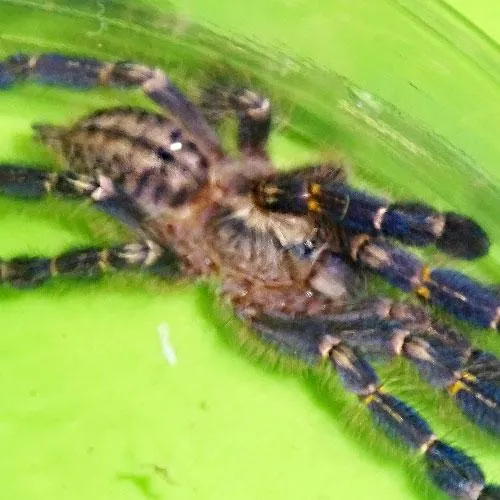
The materials used to construct your Gooty Sapphire Tarantula’s enclosure are just as critical as its size and ventilation. The choice of material can impact the ease of maintenance, visibility, and, most importantly, the safety of your tarantula. You want a material that is not only durable but also prevents the tarantula from escaping and keeps unwanted pests out. Properly selecting the material of the enclosure is one of the most important decisions you can make when setting up the enclosure.
Suitable Materials
Glass and acrylic are excellent choices for tarantula enclosures. They offer excellent visibility, allowing you to observe your tarantula easily. They are also durable, easy to clean, and provide a secure environment. Acrylic is often preferred because it is lighter and less prone to shattering than glass. Both materials hold humidity well and are readily available in various sizes and designs. Consider your own experience and needs when deciding between the two options for your tarantula. Both can work great.
Benefits of Glass or Acrylic
Glass and acrylic enclosures are easy to clean and disinfect, which is crucial for maintaining a healthy environment for your tarantula. Their transparency allows for excellent viewing, enhancing your enjoyment of observing your pet. These materials also provide a secure barrier, preventing escapes and protecting your tarantula from external threats. Properly secured lids are a must for both materials. Consider these benefits when choosing the material to ensure a happy and safe environment for your Gooty Sapphire Tarantula.
Unsuitable Materials
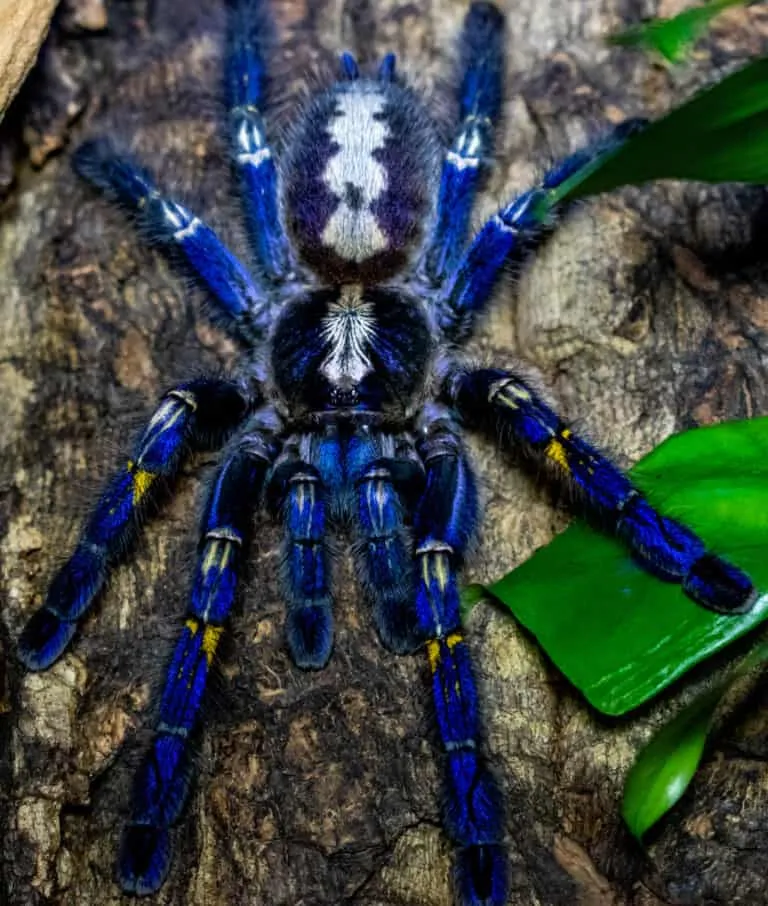
Avoid using materials that are easily damaged or pose a risk to your tarantula’s safety. Wood, while aesthetically pleasing, can harbor mold and bacteria and is difficult to disinfect thoroughly. Additionally, wood can be chewed on and may not provide adequate humidity control. Ensure the enclosure is free of any sharp edges or potential hazards. Some materials may also contain chemicals or toxins that can be harmful to your pet. Always prioritize safety when choosing an enclosure material.
Materials to Avoid
Avoid materials like untreated wood, cardboard, and anything that can be easily chewed through or that is prone to retaining moisture. These materials are not ideal for the long-term health of your tarantula. Also, avoid any materials that are toxic or could potentially harm your pet. Choose materials that are specifically designed for reptile or invertebrate enclosures to ensure safety and ease of maintenance. You also want to make sure that you have a material that allows you to easily view the tarantula and maintain the needed humidity levels.
Substrate Selection and Setup
The substrate, or bedding, is more than just the flooring of your tarantula’s enclosure; it’s a crucial component of its habitat, influencing humidity levels, providing a burrowing medium, and contributing to the overall well-being of your pet. Choosing the right substrate and setting it up properly is essential for creating a comfortable and healthy environment. Considering the needs of the tarantula and researching substrate is a must for setting up the proper environment.
Ideal Substrate Types
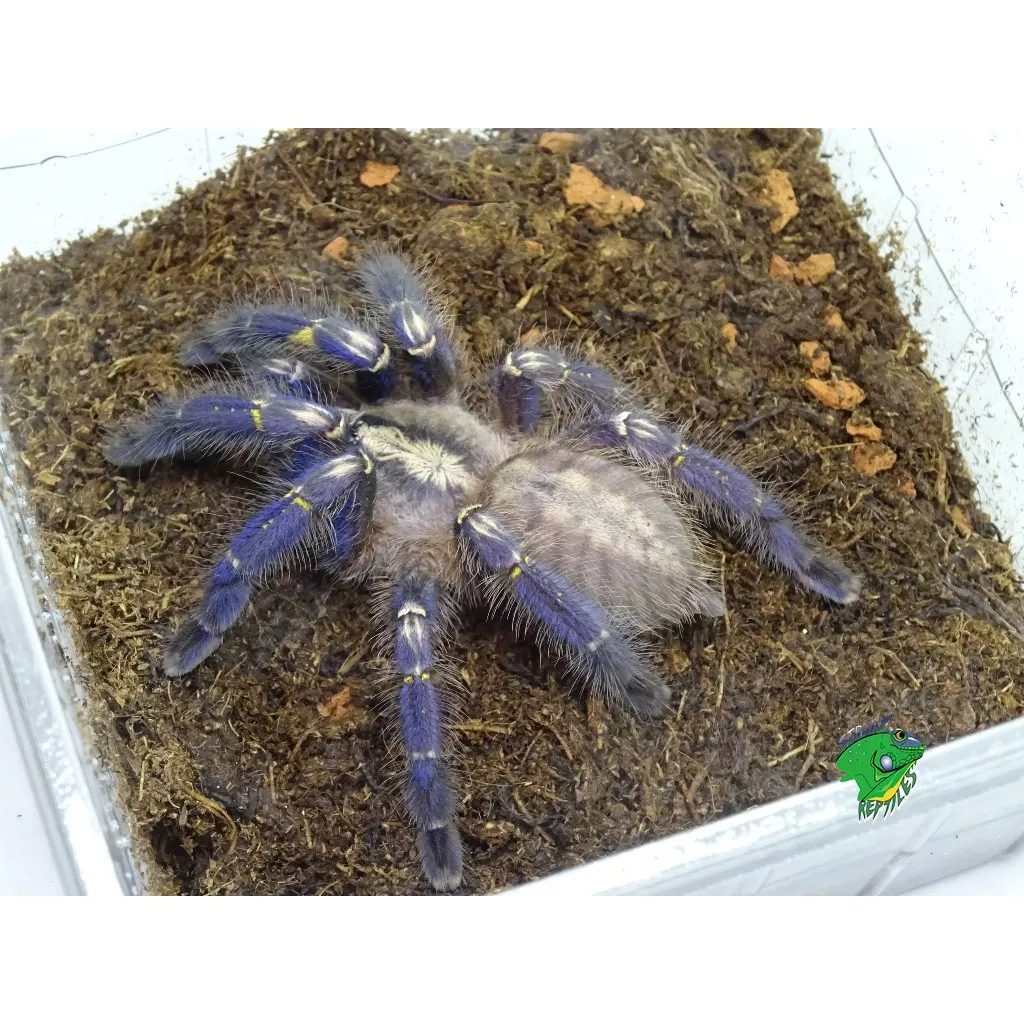
A good substrate for a Gooty Sapphire Tarantula should retain moisture, allow for burrowing (if the species exhibits this behavior), and be free of harmful chemicals or toxins. Popular choices include coconut fiber (coco coir), peat moss, and a mixture of these with a bit of vermiculite. These substrates provide a naturalistic environment, are relatively easy to maintain, and help regulate humidity levels. Be sure to research and decide which of these are best for your Gooty Sapphire Tarantula.
Coco Fiber Benefits
Coco fiber, derived from coconut husks, is a widely favored substrate due to its excellent moisture-retention properties and natural composition. It is also a good choice for burrowing spiders, as it allows them to create tunnels and burrows. Coco fiber is readily available, affordable, and easy to work with. It also has a natural appearance, enhancing the aesthetic appeal of the enclosure. It also helps to keep the enclosure free of unwanted bacteria and other potential harmful things.
Maintaining Humidity Levels
Humidity is a critical factor in maintaining your Gooty Sapphire Tarantula’s health. These tarantulas thrive in moderate to high humidity levels. Regularly misting the enclosure and ensuring the substrate remains slightly damp (but not waterlogged) is essential. The exact humidity level will depend on your local climate and the specific needs of your tarantula, but aim for between 70% and 80% humidity. Monitor humidity levels daily to ensure your tarantula’s well-being.
Monitoring Humidity
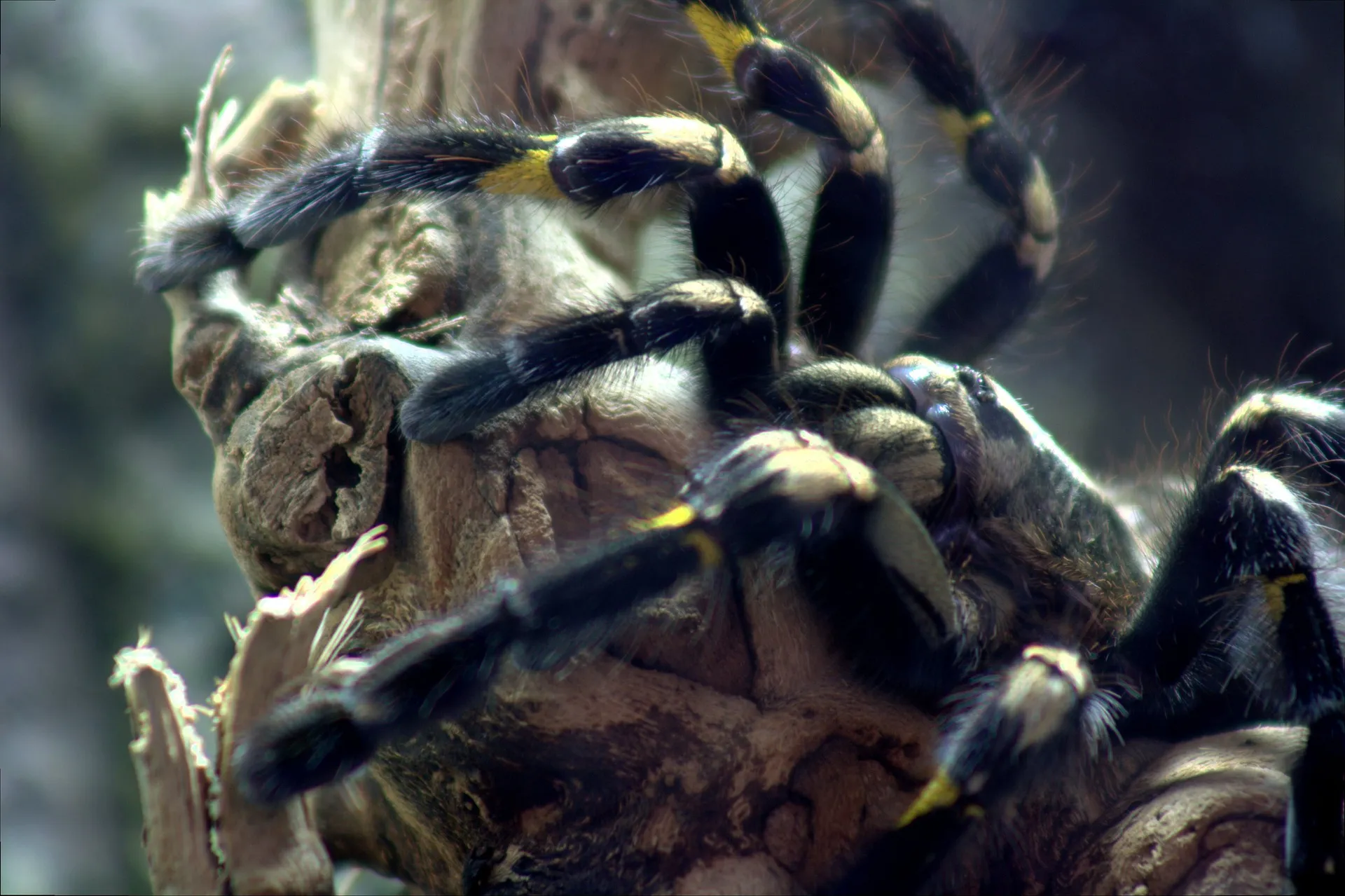
Using a hygrometer is the best way to accurately monitor the humidity levels inside your tarantula’s enclosure. Place the hygrometer in a spot where it can get a good reading of the environment. Adjust the humidity by misting the enclosure as needed. If you live in a dry climate, you may need to mist the enclosure more frequently. Ensure proper ventilation to prevent mold growth. Regular monitoring and adjustments are necessary for providing a healthy environment for your tarantula. Make sure the meter is accurate to the best of its ability.
Essential Enclosure Decor
Beyond the functional aspects of the enclosure, providing appropriate decor enhances your tarantula’s well-being and creates a more stimulating environment. Essential decorations offer hiding places, allow for natural behaviors, and contribute to the overall aesthetic of the enclosure. Providing the right decor is just as important as the other aspects of enclosure setup. Considering what the tarantula needs is always a must.
Hiding Places
Tarantulas, including Gooty Sapphires, are naturally secretive creatures. Providing a secure hide is essential for reducing stress and allowing your tarantula to feel safe. A hide can be as simple as a piece of cork bark, a half log, or a commercially available hide specifically designed for reptiles or invertebrates. The hide should be appropriately sized for your tarantula to feel secure but not overwhelmed. A good hide will allow the tarantula to feel comfortable and safe. Having a comfortable place to retreat will help to ensure the tarantula is healthy and thriving.
Importance of a Hide
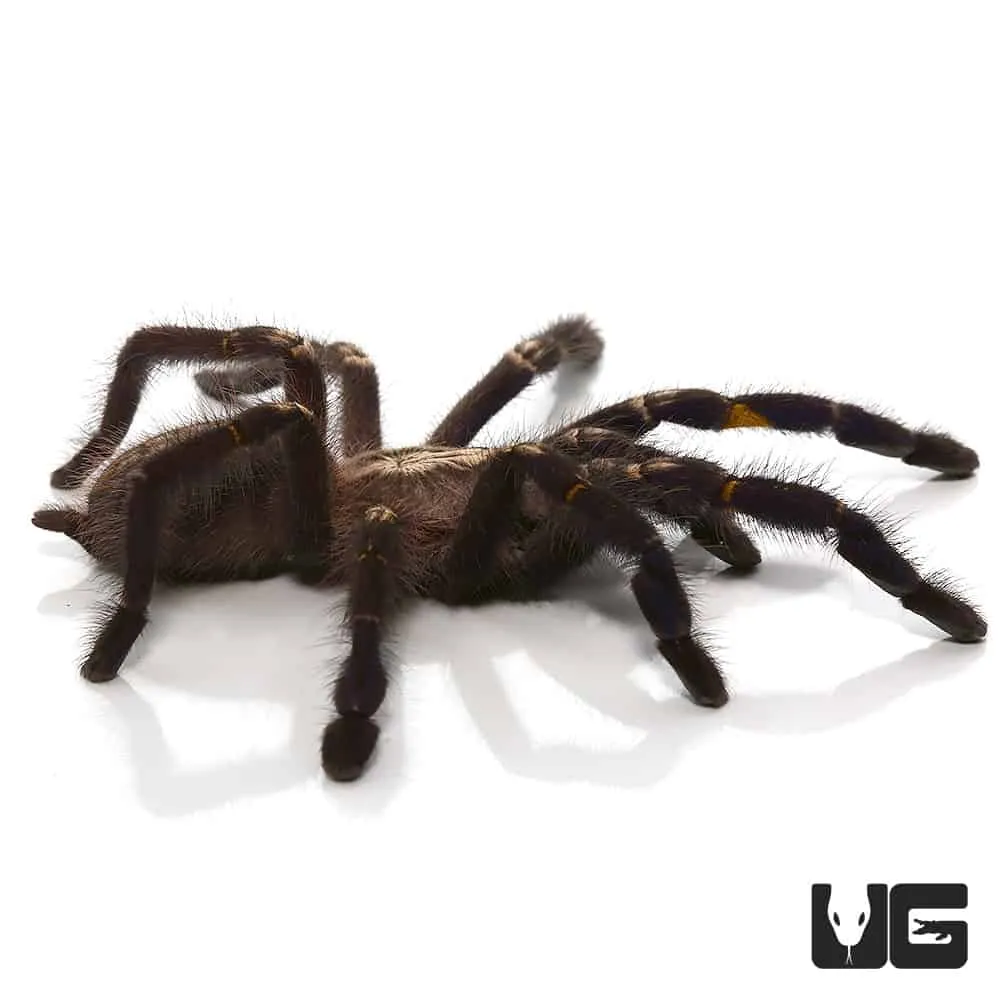
A hide provides your tarantula with a sense of security, which is crucial for its psychological well-being. It allows the tarantula to retreat from the light and feel safe from perceived threats. A hide also provides a comfortable place for molting, which is a vulnerable time for tarantulas. Without a hide, your tarantula may feel stressed, leading to a loss of appetite or other health issues. Ensuring a comfortable and private space for the tarantula is essential for their health.
Water Dish Considerations
A shallow water dish is crucial for providing your Gooty Sapphire Tarantula with a source of fresh water. The dish should be easy to access and not too deep, to prevent the tarantula from accidentally drowning. The water should be clean and changed regularly (at least once a week) to prevent the growth of bacteria. Make sure to monitor the water dish for any issues. Having easy access to clean water is essential for the tarantula’s health.
Choosing the Right Dish
Choose a water dish that is appropriately sized for your tarantula and made of a non-toxic material. Ceramic dishes, plastic dishes, and even bottle caps can work well. Make sure the dish is stable and won’t tip over easily. Clean the dish regularly with warm water and mild soap. Remove any substrate or debris from the dish when cleaning. The water dish is an essential part of the enclosure and will help your tarantula thrive.
Lighting and Heating
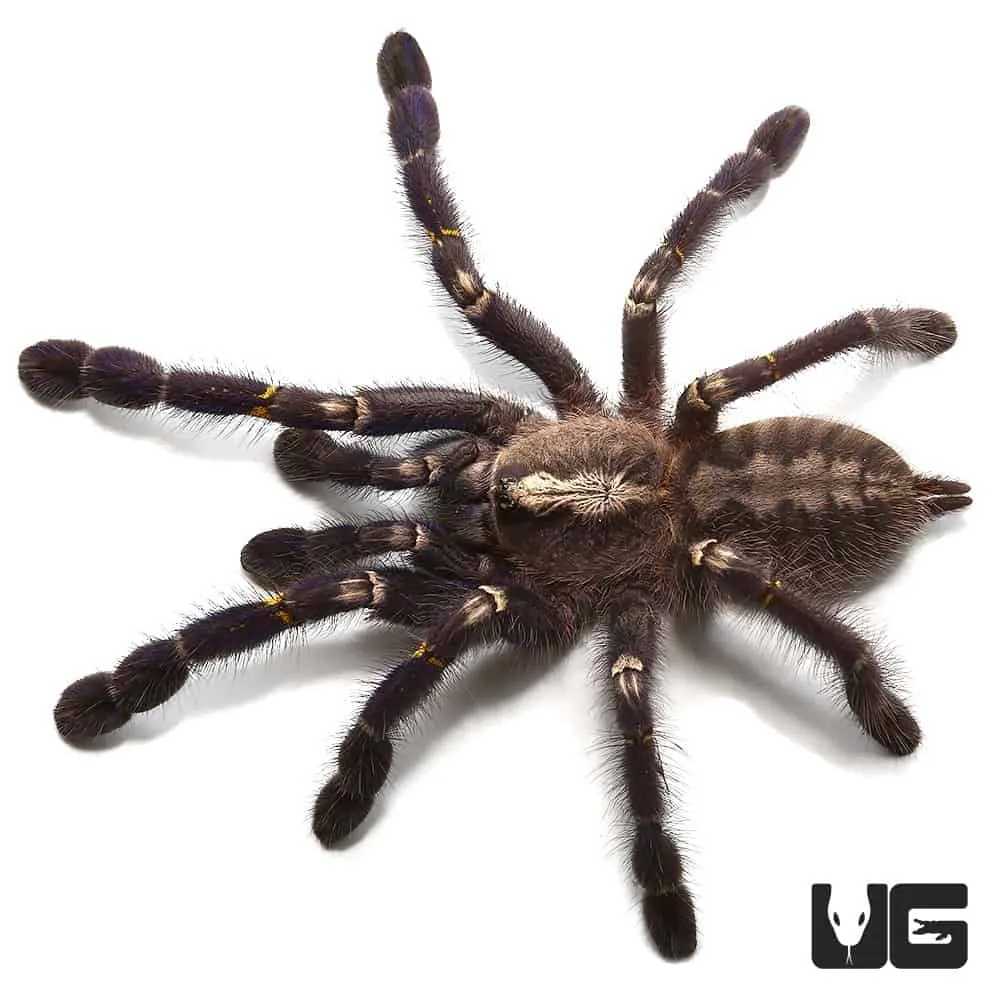
While Gooty Sapphire Tarantulas don’t require specialized lighting, maintaining the right temperature is essential for their health and well-being. Understanding their needs and how to provide these elements properly is essential for the success of your tarantula’s enclosure. The right temperature and lighting help to keep the tarantula healthy and thriving.
Lighting Requirements
Gooty Sapphire Tarantulas do not require specialized lighting like UVB. The lighting in the room where the enclosure is kept is generally sufficient. However, avoid placing the enclosure in direct sunlight, as this can overheat the enclosure and potentially harm your tarantula. Ambient room lighting is usually adequate. If you choose to provide additional lighting, ensure it does not produce excessive heat.
Need for Natural Light
While direct sunlight should be avoided, allowing your Gooty Sapphire Tarantula to experience natural light cycles can be beneficial. Place the enclosure in a location that receives indirect sunlight during the day. This can help regulate the tarantula’s natural rhythms and provide a more natural environment. Avoid excessive exposure to direct sunlight to prevent overheating. Keeping the tarantula in a room with a good amount of sunlight will help them thrive.
Heating Methods
Maintaining the correct temperature is crucial for your tarantula’s health. The ideal temperature range for Gooty Sapphire Tarantulas is between 75°F and 85°F (24°C to 29°C). Depending on your local climate, you may need to use a heat source to maintain these temperatures. Options include a heat mat attached to the side of the enclosure (controlled by a thermostat), a ceramic heat emitter, or a small incandescent bulb (use with caution and monitoring). Always monitor the temperature carefully to prevent overheating.
Maintaining Temperature
Using a thermostat is highly recommended to regulate the temperature and prevent overheating. Place the thermostat probe inside the enclosure to accurately monitor the temperature. Regularly check the temperature with a thermometer to ensure it is within the ideal range. Ensure the heating source is placed safely and cannot come into direct contact with the tarantula. Regular monitoring and adjustment are essential for creating a comfortable and safe environment.
Enclosure Maintenance and Cleaning
Regular maintenance and cleaning are essential for maintaining a healthy and hygienic environment for your Gooty Sapphire Tarantula. Establishing a routine for spot cleaning, as well as a schedule for deeper cleans, is crucial for preventing the build-up of waste, mold, and bacteria. These practices not only benefit your tarantula’s health but also make for a more pleasant environment for you to enjoy. Proper enclosure cleaning and maintenance is key to the long-term health of your pet.
Routine Cleaning Procedures
Spot cleaning involves removing any visible waste, uneaten food, and molted exoskeletons. Use a pair of tongs or tweezers to carefully remove these items from the enclosure. Regularly check the water dish and replace the water with fresh, clean water. Spot clean as needed, usually every few days to a week. Routine cleaning prevents the build-up of debris that can negatively affect the tarantula’s environment.
Spot Cleaning Schedule
Establish a consistent spot-cleaning schedule to maintain a clean and healthy enclosure. Remove any uneaten prey items within 24 hours to prevent the growth of mold or bacteria. Regularly check for and remove any fecal matter, which can accumulate over time. A regular schedule will help keep the enclosure clean and easy to maintain, and ensures the health of your pet tarantula. Establish a schedule to ensure a healthy environment.
Deep Cleaning Frequency
Deep cleaning involves replacing the substrate and thoroughly cleaning the entire enclosure. The frequency of deep cleaning depends on factors such as the size of the enclosure, the type of substrate used, and your tarantula’s waste production. As a general guideline, a complete substrate change every 6-12 months is recommended. During a deep clean, remove the tarantula and place it in a temporary holding enclosure. Discard the old substrate, wash the enclosure with warm water and mild soap, rinse thoroughly, and allow it to dry completely before re-setting up the enclosure.
When to Deep Clean
Signs that indicate it’s time for a deep clean include excessive waste build-up, the presence of mold or mites, or an unpleasant odor. The substrate may also become compacted over time, reducing its ability to absorb moisture and maintain humidity. Always prioritize your tarantula’s well-being, and don’t hesitate to perform a deep clean if you notice any of these issues. Regular deep cleaning is essential for keeping your tarantula healthy.
Final Thoughts
Creating the perfect Gooty Sapphire Tarantula enclosure is a rewarding endeavor that ensures the health and happiness of your stunning pet. By following the guidelines outlined in this comprehensive guide, you can provide a comfortable, stimulating, and secure environment where your tarantula can thrive. Remember to prioritize safety, maintain a clean environment, and observe your tarantula regularly to catch any potential problems early on. With the proper care and setup, you can enjoy the beauty and fascinating behavior of your Gooty Sapphire Tarantula for years to come.
